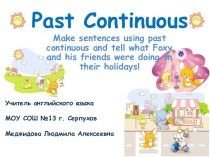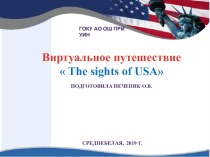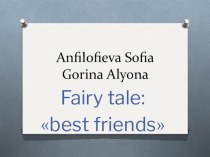- Главная
- Разное
- Бизнес и предпринимательство
- Образование
- Развлечения
- Государство
- Спорт
- Графика
- Культурология
- Еда и кулинария
- Лингвистика
- Религиоведение
- Черчение
- Физкультура
- ИЗО
- Психология
- Социология
- Английский язык
- Астрономия
- Алгебра
- Биология
- География
- Геометрия
- Детские презентации
- Информатика
- История
- Литература
- Маркетинг
- Математика
- Медицина
- Менеджмент
- Музыка
- МХК
- Немецкий язык
- ОБЖ
- Обществознание
- Окружающий мир
- Педагогика
- Русский язык
- Технология
- Физика
- Философия
- Химия
- Шаблоны, картинки для презентаций
- Экология
- Экономика
- Юриспруденция
Что такое findslide.org?
FindSlide.org - это сайт презентаций, докладов, шаблонов в формате PowerPoint.
Обратная связь
Email: Нажмите что бы посмотреть
Презентация на тему Stylistics of the English Language 2. The types of stylistics
Содержание
- 2. OutlineThe types of stylisticsDecoding Stylistics and its Techniques
- 3. Types of stylisticsLiterary and linguistic stylisticsFunctional stylisticsComparative stylisticsDecoding stylistics
- 4. Literary and
- 5. Literary and Linguistic Stylistics: ExampleJack. [Nervously.] Miss
- 6. The Importance of Being Earnest by
- 7. The Importance of Being Earnest by
- 8. Functional Stylisticsinvestigates functional styles or sublanguages of
- 9. Functional Stylistics: ExampleWhen The New Yorker was
- 10. Functional Stylistics: ExampleThe extract above is a
- 11. Comparative Stylisticsconnected with the contrastive study of
- 12. Comparative Stylistics: Example 2 Ка-а-ма, чики неλня мэтаλ
- 13. Decoding Stylisticsdeveloped byR.Jacobson (1896-1982), Closing Statement: Linguistics
- 14. Decoding Stylisticsdraws upon:Information TheoryPsychologyStatistical StudiesLinguisticsLiterary TheoryLiterary Criticism
- 15. Decoding Stylistics and the Theory of
- 16. Encodingtext analysis from the author’s point of
- 17. Decodingtext analysis from the reader’s point of
- 18. Decoding Stylisticsis in fact the reader’s stylistics
- 19. Decoding Stylisticsdoes not consider the stylistic function
- 20. Decoding Stylistics – Reader Response CriticismFrom
- 21. Decoder=Reader=“Artist”What is reading but divining (perceive by
- 22. Decoding Stylistics: Foregrounding Techniques There are
- 23. Foregrounding Techniques : Example We think sometimes
- 24. Foregrounding Techniques: Example AnalysisCoupling –
- 25. Decoding Stylistics: Foregrounding Techniques 3)convergence of expressive
- 26. Скачать презентацию
- 27. Похожие презентации
OutlineThe types of stylisticsDecoding Stylistics and its Techniques




![Stylistics of the English Language 2. The types of stylistics Literary and Linguistic Stylistics: ExampleJack. [Nervously.] Miss Fairfax, ever since I met](/img/tmb/15/1420870/a3e5aa532804913167aad9c6571a77ab-720x.jpg)















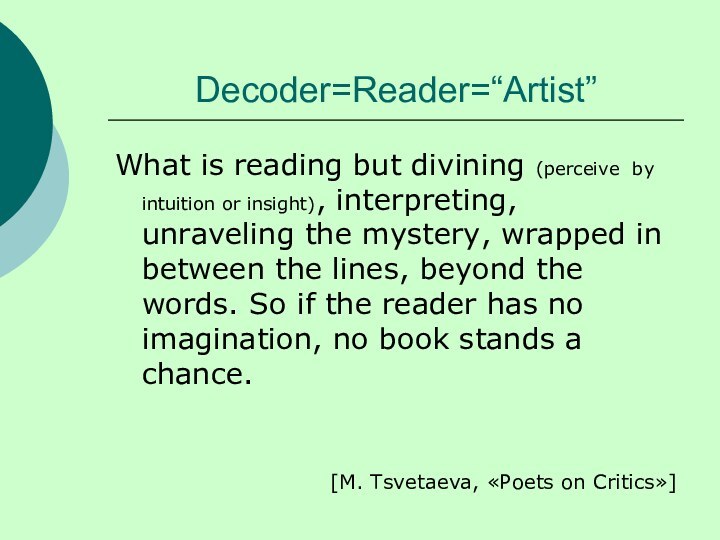


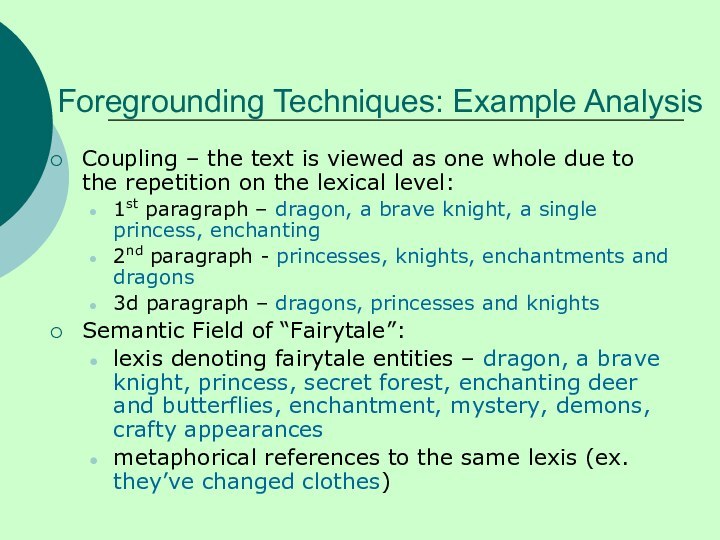


Слайд 3
Types of stylistics
Literary and linguistic stylistics
Functional stylistics
Comparative stylistics
Decoding
stylistics
Слайд 4 Literary and
Linguistic
StylisticsCommon ground:
The literary language
The idiolect of a writer
Different points of analysis:
Слайд 5
Literary and Linguistic Stylistics: Example
Jack. [Nervously.] Miss Fairfax,
ever since I met you I have admired you
more than any girl . . . I have ever met since . . . I met you.Gwendolen. Yes, I am quite well aware of the fact. And I often wish that in public, at any rate, you had been more demonstrative. For me you have always had an irresistible fascination. Even before I met you I was far from indifferent to you. [Jack looks at her in amazement.] We live, as I hope you know, Mr. Worthing, in an age of ideals. The fact is constantly mentioned in the more expensive monthly magazines, and has reached the provincial pulpits, I am told; and my ideal has always been to love someone of the name of Ernest. There is something in that name that inspires absolute confidence. The moment Algernon first mentioned to me that he had a friend called Ernest, I knew I was destined to love you.
Слайд 6 The Importance of Being Earnest by Oscar Wilde Literary
Criticism Approach:
Genre: drama, conversational style
Author’s attitude: witty and ironic
style of writing Message: love confession of a nervous man to a light-headed girl
Composition*: development*
Слайд 7 The Importance of Being Earnest by Oscar Wilde Linguistic
Stylistics Approach:
Phono-graphical: many dots - groping for words; brackets
Morphological:
the variety of tenses in Gwendolen’s speech indicates her composure and ability to narrate as well as analyze her life, particularly her own thoughts, at the moment;Lexical: J’s scarcity of vocabulary is contrasted with G’s abundance of it; G’s choice of lexis brings out her romantic nature and superficial interest in Jack;
Syntactical: the sentences in G’s speech are mostly simple revealing the control of thoughts. The compound sentence used suggests that the character lives according to the rules mentioned in “the more expensive monthly magazines”. The final complex sentence with the subordinate clause of time represents the indirect love confession of the girl. The syntactical complexity grows towards the end;
Stylistic: the antimetabole used in J’s utterance points at his state of mind. The clash between the perfectly rounded phrase and empty content creates a humorous effect. In G’s speech we can see indirect expression of affection conveyed by the litotes (far from indifferent);
Слайд 8
Functional Stylistics
investigates functional styles or sublanguages of the
national language, such as
belles-lettres/emotive prose
colloquial
business
publicist/media (discourse)
scientific
style of legal documents
Слайд 9
Functional Stylistics: Example
When The New Yorker was founded,
Tolstoy and Dostoyevsky had already been well-known among the
erudite readers, because no introduction of them has been traced in the magazine. Tolstoy is the only writer mentioned on a level with Shakespeare, four times at that, and is compared to God twice. It is a reflection of the fact that among the authors of Russian origin Tolstoy is the most revered. Dostoyevsky, in turn, is the most precedent writer in the group under scrutiny, since his name is the most resorted to during the period 1925-2015.[Mikhaylov 2015: 89]
Слайд 10
Functional Stylistics: Example
The extract above is a fragment
of science prose:
the use of formal vocabulary (resorted to,
under scrutiny)the use of quantitative/statistics method (four times at that; his name is the most resorted to during the period 1925-2015)
the use of a reference with pages ([Mikhaylov 2015: 89])
Слайд 11
Comparative Stylistics
connected with the contrastive study of more
than one language
studies the stylistic characteristics of one
language in
comparison with those of another onelinked to the theory of translation
Example 1
English: Today is Thursday.
French: Nous sommes jeudi aujourd’hui (“We are Thursday today”). - Subjectivism
Слайд 12
Comparative Stylistics: Example 2
Ка-а-ма, чики неλня мэтаλ тэλ
пы’т, пы’т тохоλамэλ, кана тохоλамэλ ниλха ηа’’. Ниλин тянямтамэй
ηэλха. [from a conversation between two Nenets men]Oh, this leading deer seems to have been taught by somebody other than you. Your Granddad seems to have tamed him.
Слайд 13
Decoding Stylistics
developed by
R.Jacobson (1896-1982), Closing Statement: Linguistics and
Poetics (1960)
M. Riffaterre (1924-2006), The Stylistic Function (1964)
Y.M. Lotman
(1922-1993), Структура художественного текста (1970)I. V. Arnold (1908-2010), Стилистика.Современный английский язык. Стилистика декодирования (2007)
Слайд 14
Decoding Stylistics
draws upon:
Information Theory
Psychology
Statistical Studies
Linguistics
Literary Theory
Literary Criticism
Слайд 15
Decoding Stylistics
and the Theory of Communication
Claude Shannon,
"The Mathematic Theory of Communication" (1949), the chain of
communication:objective reality > transmitter/encoder > message/text > receiver/ decoder > objective reality (surrounding the adressee)
The chain of communication in literature:
social reality (surrounding the writer) > writer (encoder) > literary work > reader (decoder) > social reality (surrounding the reader)
Слайд 16
Encoding
text analysis from the author’s point of view:
epoch, the historical situation, the political, social and aesthetic
views of the author (processing and delivering)the process of internalizing of the outside information and translating it into the imagery
Слайд 17
Decoding
text analysis from the reader’s point of view:
the composition of the text, the vocabulary used, sentence
arrangement, projecting the ideas from the text onto the reality of the reader, etc.the process of interpreting the text in question
Слайд 18
Decoding Stylistics
is in fact the reader’s stylistics that
is engaged in recreating the author’s vision of the
world with the help of concrete text elements and their interaction throughout the text
Слайд 19
Decoding Stylistics
does not consider the stylistic function of
any stylistically important feature separately but only as a
part of the whole text
Слайд 20
Decoding Stylistics –
Reader Response Criticism
From the reader’s
point of view the important thing is not what
the author wanted to say but what he managed to convey in the text of his work.
Слайд 21
Decoder=Reader=“Artist”
What is reading but divining (perceive by intuition
or insight), interpreting, unraveling the mystery, wrapped in between
the lines, beyond the words. So if the reader has no imagination, no book stands a chance.[M. Tsvetaeva, «Poets on Critics»]
Слайд 22
Decoding Stylistics:
Foregrounding Techniques
There are 5 major
foregrounding techniques:
1) coupling - deals with the arrangement of
textual elements that provide the unity and cohesion of the whole structure2) semantic field - identifies lexical elements in text segments and the whole work that provide its thematic and compositional cohesion
Слайд 23
Foregrounding Techniques : Example
We think sometimes there’s
not a dragon left. Not one brave knight, not
a single princess gliding through secret forests, enchanting deer and butterflies with her smile.What a pleasure to be wrong. Princesses, knights, enchantments and dragons, mystery and adventure… not only are they here-and-now, they are all that ever lived on earth.
Our century they’ve changed clothes, of course. Dragons wear government-costumes, today, and failure-suits and disaster-outfits. Society’s demons screech (to utter a shrill), whirl down on us should we lift our eyes from the ground, dare we turn right at corners we’ve been told to turn left. So crafty (skilled in deception) have appearances become that princesses and knights can be hidden from each other, can be hidden from themselves.
[Richard Bach, The Bridge Across Forever, p.13]
Слайд 24
Foregrounding Techniques: Example Analysis
Coupling – the text
is viewed as one whole due to the repetition
on the lexical level:1st paragraph – dragon, a brave knight, a single princess, enchanting
2nd paragraph - princesses, knights, enchantments and dragons
3d paragraph – dragons, princesses and knights
Semantic Field of “Fairytale”:
lexis denoting fairytale entities – dragon, a brave knight, princess, secret forest, enchanting deer and butterflies, enchantment, mystery, demons, crafty appearances
metaphorical references to the same lexis (ex. they’ve changed clothes)











